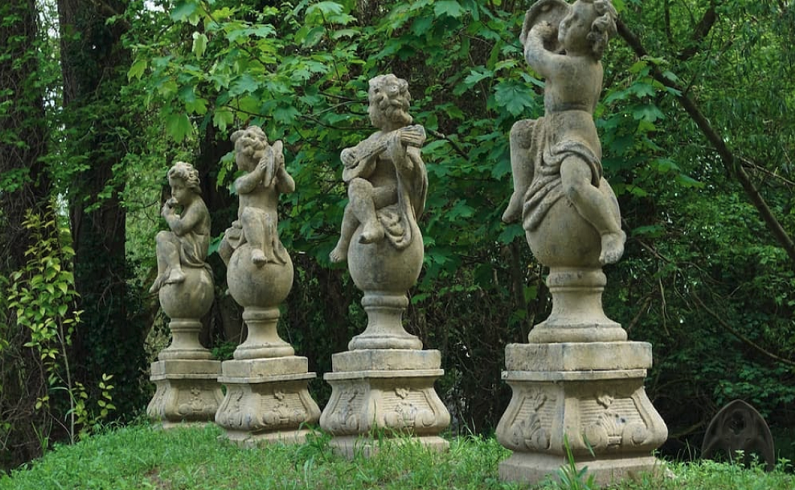Even though they’re commonly seen in gardens, there are several butterfly species whose populations are declining due to habitat loss. Attracting butterflies to your garden will make your flowerbeds much more lively and beautiful, and this practice also supports biodiversity. Luckily, there are some simple practices and advice from experienced gardeners that can help you be proactive and create a more homely and safe environment for them.
The Reason Butterflies are Attracted to Your Garden
Before anything else, you have to provide the butterflies with a food source. Flower nectar is the source of energy for adult butterflies, who visit gardens in search of them. To attract them, grow nectar-rich flowers in the spring and summer. Cultivate different plants that flower throughout the year and keep them well-watered because their nectar supply reduces if the plants are struggling for water.
What Plants Attract Butterflies?
Adult butterflies tend to be drawn to various flowers, such as lavender, clover, heather, bluebells, marigolds, heather, buttercups, garden mint, knapweed, Bowles’ Mauve wallflower, blackberry bushes, thistles, hyacinth, willow herbs, and marjoram. If you’re looking to create a butterfly-friendly garden, these are some wonderful flowers to get you started.
Spring and summer are crucial times to support butterflies, but in the autumn, ivy provides a late nectar supply for insects. Consider it an option. The Bowles’ Mauve wallflower also grows in the autumn. Besides that, butterflies need food to be available from early spring to late summer. In August, some species will feed on the sugar inside discarded fruit, so it’s a good idea to leave fallen fruit on the ground for them. Rotting pears, apples, and berries would do the perfect job because butterflies struggle to consume anything too hard. If you leave fruit out in the compost heap, the riper it is, the better.
Help Butterflies Feel at Home in Your Garden
Butterflies are not only beautiful creatures, but they also play a crucial role in maintaining the balance of ecosystems. Sadly, their numbers have been decreasing due to the destruction of their habitat and the spraying of pesticides. To help butterflies feel at home in your garden, there are several steps you can take, backed by research and evidence. Firstly, planting native flowers is essential as they provide nectar for adult butterflies to feed on. Research conducted by the University of Kentucky found that native plants attracted significantly more butterfly species compared to non-native ones. Additionally, incorporating a variety of flower shapes and colours will attract different butterfly species with diverse feeding preferences.
Provide them with water
Lastly, ensuring a water source, such as shallow dishes filled with wet sand or pebbles, enables butterflies to drink water safely without drowning while offering an additional attractive feature in your garden.
Create sheltered areas
Creating suitable habitats within your garden is equally vital for attracting butterflies. Providing sheltered areas like dense vegetation or shrubs where butterflies can rest during harsh weather conditions or hide from predators has been proven effective.
Get a little wild
In general, allow your garden to go a little wild around the edges and don’t get rid of all of the weeds. You can’t have butterflies without caterpillars, and larvae like to feed on nettles, thistles, ragwort, mixed grasses, holly, and ivy. This way, you can support them by welcoming some of the less popular wildflowers into your garden. You can also grow wildflowers not only directly in the ground but also in containers.
Deadhead flowers
Deadhead any spent flowers as it helps keep the plants in bloom for longer and provides nectar for the butterflies. They also prefer to feed on open, tube-shaped flowers such as Joe-Pye weed, ironweed, coneflowers, goldenrod, and brightly-hued asters. Make sure also to plant enough “host” flowers for caterpillars, such as milkweed, dill, and asters.
Utilise your balcony or windowsill
Fortunately, even people who don’t have large gardens can help the butterflies thrive. Many people have plants at home in a window box or on a patio, such as marigolds, yarrow, and lavender. Place them on the window that gets the most sunlight, and they’ll surely help with your efforts to attract butterflies.
Take care of the native butterflies
Don’t forget to also do some local research on the species of butterflies that live in your area and what they feed on. When you do that, don’t forget to also provide food for the caterpillar stage of the butterflies’ life cycle. Besides that, keep enough trees and shrubs around the garden where the butterflies can hide when the weather’s bad. Try not to tidy it too much during winter, as that’s the time when butterflies wait out the cold weather as larvae and hide in gardens and parks. Let some leaves gather, and keep the pruning to a minimum.
Take care of the caterpillars too
Another important consideration is providing host plants for caterpillars to lay eggs on and serving as food sources for them once hatched. For instance, monarch butterflies (even though rare in the UK) rely exclusively on milkweed plants as their host plant. By including milkweed in your garden, you can support the survival of these iconic insects throughout their life cycle.
Avoiding the use of pesticides or opting for organic alternatives is crucial when aiming to create a welcoming environment for butterflies. Pesticides not only harm adult butterflies directly but also affect larvae and caterpillars indirectly through contaminated leaves which disrupt their growth and development.
Final thoughts
In conclusion, helping butterflies feel at home in your garden requires thoughtful planning based on scientific evidence and recommendations from experts studying these fascinating creatures’ behaviours and needs. Planting native flowers rich in nectar along with specific host plants provides them with sustenance throughout their life cycle. Creating suitable habitats, avoiding pesticides, and providing a water source are additional measures that can significantly contribute to the well-being of butterflies in your garden. By implementing these strategies, you not only enhance the beauty of your outdoor space but also play an active role in conserving and supporting butterfly populations for future generations.
Inviting butterflies into your garden is not only beautiful but also helps the environment! Planting diverse nectar-rich flowers, providing host plants, and choosing native species that suit your climate are all great steps to take. Plus, adding shallow water sources and sheltered areas will make it even better. So go ahead and turn your garden into a paradise where the butterflies flutter in the sun! Enjoy the beauty and joy of having them around while doing your part to protect them. Happy gardening!





